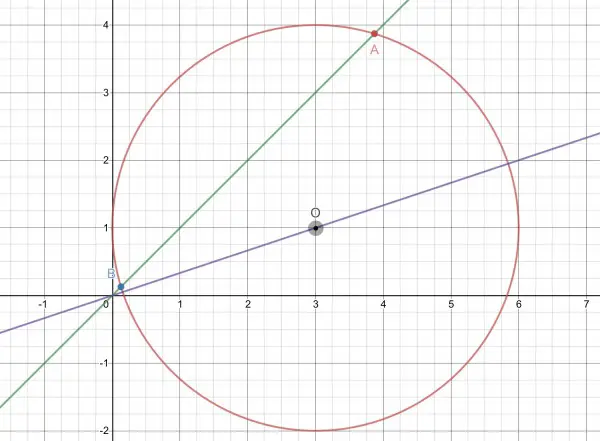
If the circle’s centre is at (h,k) then this point must lie on x-3y=0, therefore h=3k. Because the y-axis (x=0) is a tangent the radius=3k. We can therefore write the equation of the circle in terms of k:
(x-3k)²+(y-k)²=9k²
The line y=x intersects the circle at A and B.
We need to solve for x:
(x-3k)²+(x-k)²=9k²,
x²-6kx+9k²+x²-2kx+k²=9k²,
x²-4kx=-k²/2,
x²-4kx+4k²=4k²-k²/2=7k²/2,
(x-2k)²=7k²/2,
x-2k=±k√(7/2)=±k√14/2. The y values are the same because y=x.
So let A=(2k+k√14/2,2k+k√14/2) and B=(2k-k√14/2,2k-k√14/2)
To find the length of AB we use Pythagoras:
√(14k²+14k²)=√(28k²)=2k√7=2√27, and k=√(27/7).
I suspect that AB=2√7, which would make k=1.
The equation would then be (x-3)²+(y-1)²=9.
This can also be written:
x²-6x+y²-2y+1=0.
This makes A=(2+√14/2,2+√14/2) and B=(2-√14/2,2-√14/2).
See picture.